Detailed structure of the LG washing machine with the purpose of the components and their description
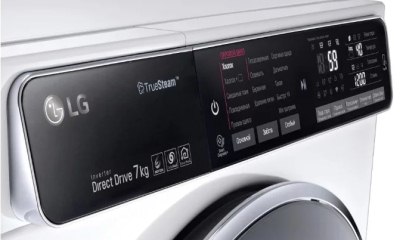 Knowing the internal structure of an LG washing machine helps you better navigate the functionality of the household appliance and, if necessary, independently fix a problem that suddenly arises.
Knowing the internal structure of an LG washing machine helps you better navigate the functionality of the household appliance and, if necessary, independently fix a problem that suddenly arises.
It is necessary to study the device of the washing machine in stages, step by step, noting the main characteristics and features of the functioning of each element.
Content
How does an automatic washing machine work?
The body of the washing machine consists of a front panel, two side panels, a rear panel and a top cover. It is under the top cover that access to the following elements is hidden:

Pressostat (aka water level sensor)
This small round box is fixed in the corner, closer to the back wall of the household appliance. The plastic case contains:
- air chamber with membrane,
- tubes,
- an inductor with a core and a group of conductors.
The main purpose of the pressure switch is to control the water level in the drum. During the process of filling the drum with water, air, moving through the hose inside the sensor, presses on a thin plate - a membrane. As soon as the tank is filled with water to a critical level, the air squeezes out the membrane, the contacts close and the control module receives a signal to stop the water supply.
In the center of the pressure switch housing you can find an adjustment screw; by unscrewing or tightening it you can change the pressure level in the tank. The manufacturer does not recommend changing the standard pressure switch settings, as this increases the load on other elements of the internal structure of the washing machine.
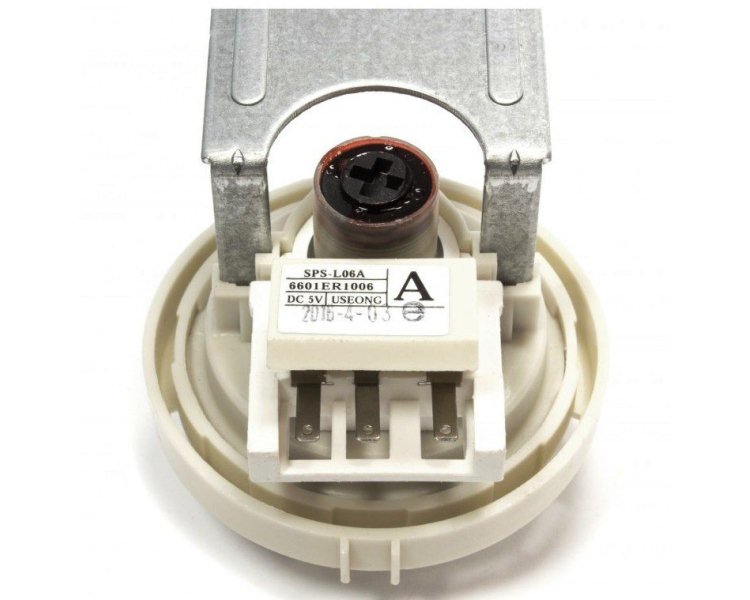
filling valve
This is a shut-off element that is part of a pipe connected to a water hose. The filling valve is a kind of protection against leaks.
As soon as the machine is turned on and the command to start the wash is given, electricity passing through the fill valve coil creates an electromagnetic field that opens the shut-off valve.
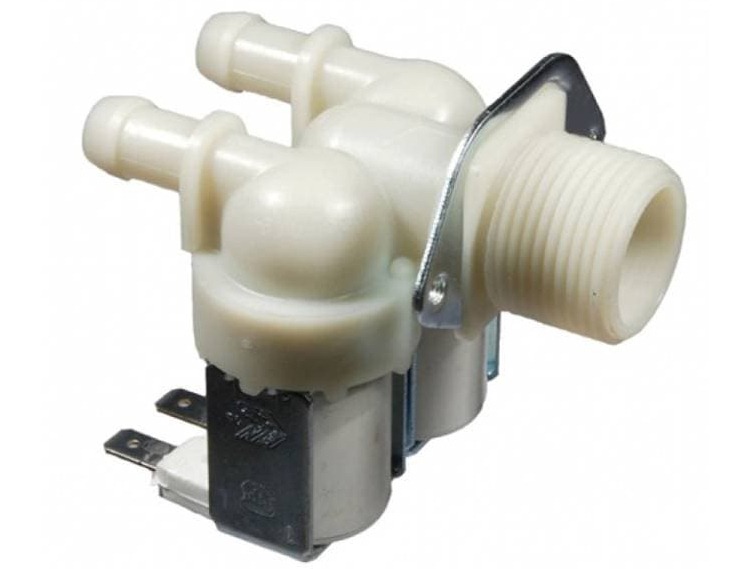
Counterweights
These are very heavy plastic or concrete blocks, one is fixed with a bolt on top of the tank, two more are located around the washer hatch.
The counterweight in the washing machine acts as a shock absorber, removing the force of vibration of the tank during the washing or spinning process. The counterweight also makes the household appliance heavier, making it more stable.
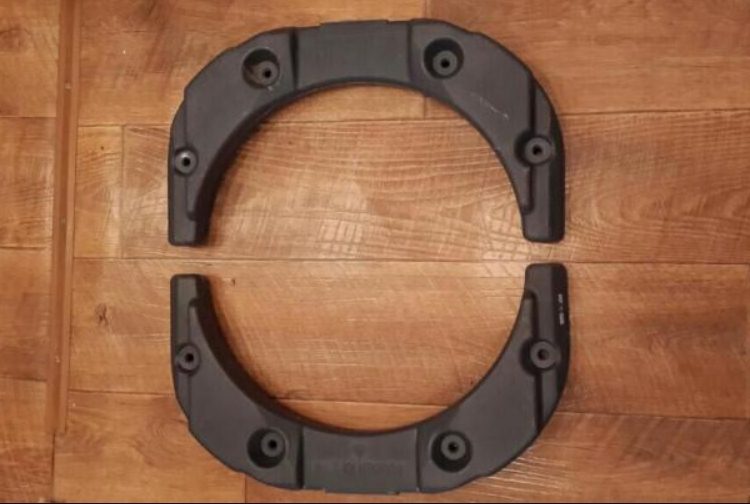
From the front panel you can access the following elements of the internal structure of the washing machine:
Detergent dispenser
This is a plastic tray located at the top of the front panel of the washing machine. The powder receptacle is divided into three segments: for main wash, extra wash and conditioner.
Powder for the main wash is poured into the compartment marked with the Roman numeral I, and powder for pre-wash is poured into the compartment marked II. Fabric softener is poured into the compartment marked “*”. The powder receiver is connected to the filling valve by pipes.
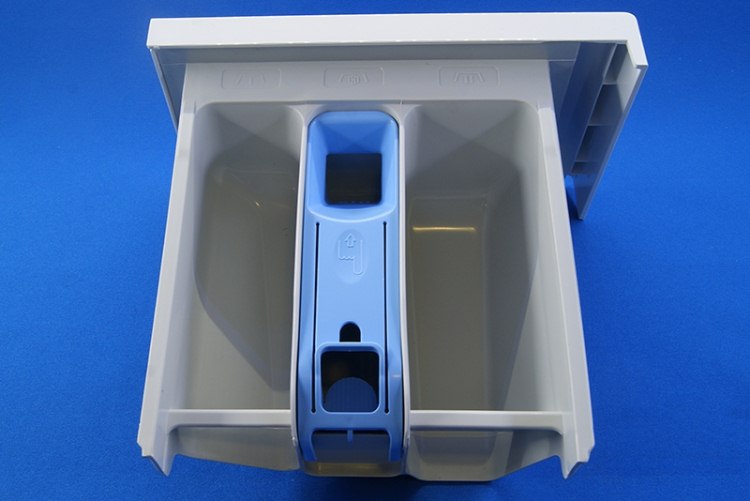
Control module
This is the basic element of the internal structure of a spiral machine. Main functions of the control module:
- exchanges information with the display board (information displays on the control panel display error codes and other signs indicating current processes);
- gives a signal to supply or drain water;
- controls the hatch locking device;
- controls the process of heating water in the tank;
- controls the engine in all operating modes.
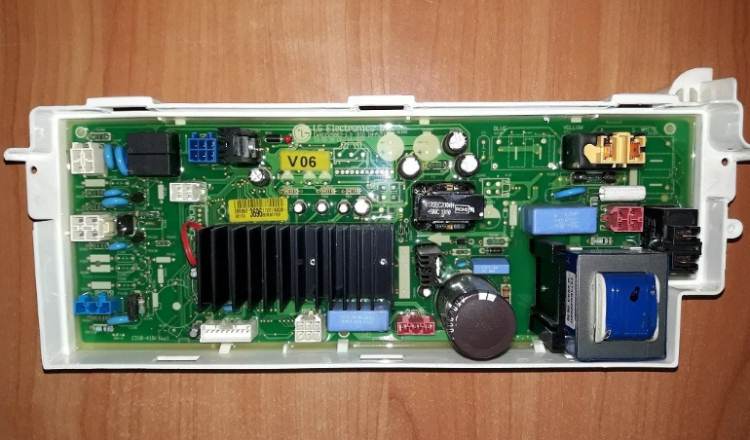
The central part of the front panel of the LG washing machine is occupied by a hatch door, behind which the door locking device and a rubber cuff are hidden.
Hatch locking device
The main purpose of the UBL is to lock the door after starting the wash. (ensures safe operation of the washing machine).
The hatch locking device consists of a latch, a thermoelement and a bimetallic plate (all elements are hidden under a plastic casing).
As soon as a command to start washing is received from the control module, the UBL thermoelement receives a certain discharge of electric current. When heated, the thermoelement transfers heat to the bimetallic plate, which, as it increases, pushes out the latch (as a result, the door is blocked). At the end of the wash, two to three minutes are enough for the thermoelement to cool down and the hatch door lock to be removed.
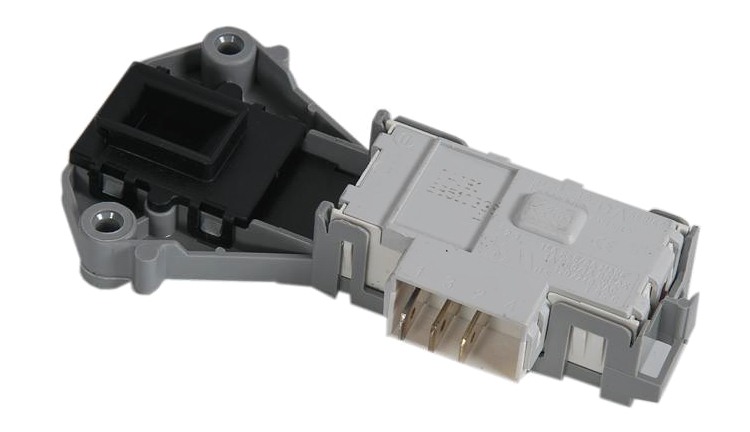
Cuff
This is a special rubber ring that connects the tank to the front panel of the washing machine. It's rubber The cuff ensures the tightness of the hatch closure, prevents water from penetrating out of the drum.The rubber cuff is fixed using two clamps: external and external.
An outer clamp (metal ring) secures the cuff from the outside of the front panel. To dismantle it, you need to bend the latch and tighten the ring. In order to get to the internal clamp, the front panel of the washing machine will have to be removed. Simple instructions for replacing the hatch cuff of an LG washing machine - here.
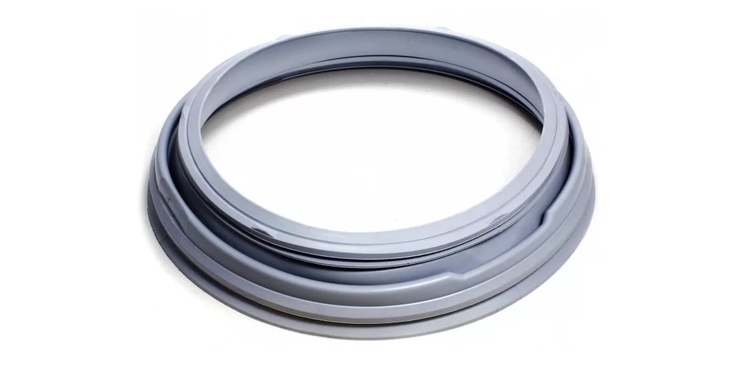
At the bottom of the front panel there is a technical hatch, behind which the drain filter and emergency drain hose are hidden.
Drain filter
This is a small plastic oblong plug with a handle and an emergency water drain hose outlet. It is the filter that protects the drain pump impeller from foreign objects and debris.
The drain filter must be unscrewed and cleaned regularly (at least once three months).. Such simple actions will prolong the uninterrupted operation of the drain pump.
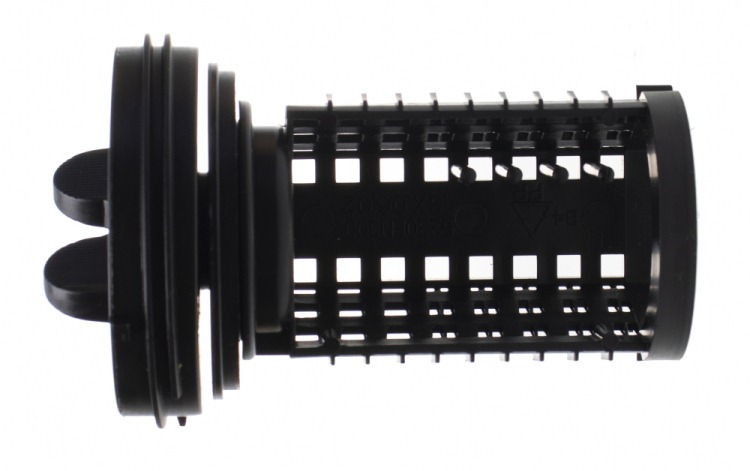
Let's move on to studying the back panel and what's hidden behind it. On the back wall there is a power cord (provides electricity) and two hoses. One tube - a filler tube - is located in the upper part of the rear panel (it is through it that water flows from the water supply). The second tube is a drain tube located at the bottom of the rear panel (designed to drain dirty water into the sewer).
Most of the rear panel is occupied by the service hatch.. It is behind it that access to the main mechanisms and parts of the LG washing machine is hidden.
Engine
Modern models of LG washing machines are equipped with an inverter-type engine. Unlike commutator-type motors, inverter motors are fixed directly to the drum shaft.The absence of a pulley, drive belt, carbon brushes and other connecting elements helps to extend the uninterrupted operation of the engine several times.
Inverter type motor design:
- Rotor (a metal bowl fixed on the drum shaft, inside of which magnets are located).
- Stator (a plastic circle connected to the outside, with recesses for winding coils, inside which electrical plates and a tachogenerator are located).
The alternating current is supplied to the inverter motor, which converts it into direct current, and then again into alternating current of the required magnitude. Such transformations make it possible to precisely regulate the rotor speed. Placing the rotor and drum on the same shaft helps reduce vibration significantly and ensures the most accurate balancing of the tank. Instructions on how to identify a faulty LG washing machine motor and replace it - Here.

Tachogenerator
Hall sensor (tachogenerator) - small coil, mounted in the housing of the inverter motor, designed to read the speed of the washing machine engine.
When the motor rotates, voltage is generated inside the coil under the influence of a magnet. Depending on the speed of rotation, the voltage indicator changes. The sensor reads this information and transmits it to the control module. The control module signals the discrepancy between the received data and the programmed data with an error code on the control panel.
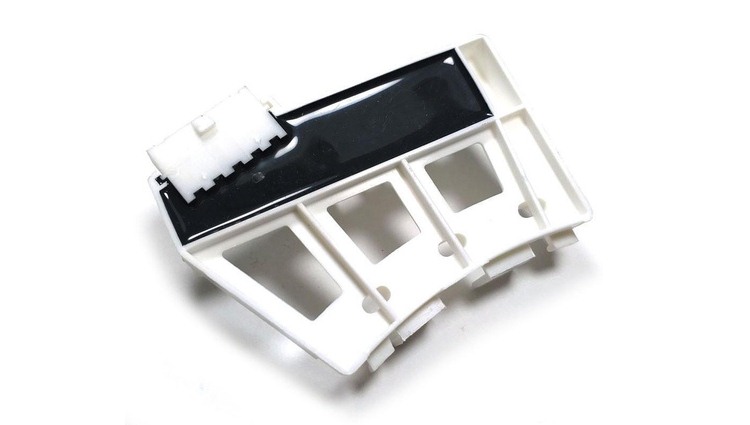
Drum
This is a stainless container in which the process of washing, rinsing and spinning directly takes place. The inner surface of the drum is perforated. It is through these small holes in the drum that water and powder enter, and dirty liquid flows out after washing.
On the outside the drum is protected by two halves of the tank. These plastic elements are fastened together with screws (very rarely, in older models of LG washing machines you can see solid, non-separable tanks).
On one side, the tank is connected to the drum with a rubber cuff, on the other, the drum shaft passes through the tank to the bearing unit. Step-by-step recommendations on how to remove the drum from an LG washing machine and replace it - in this article about bearing replacement - in this.
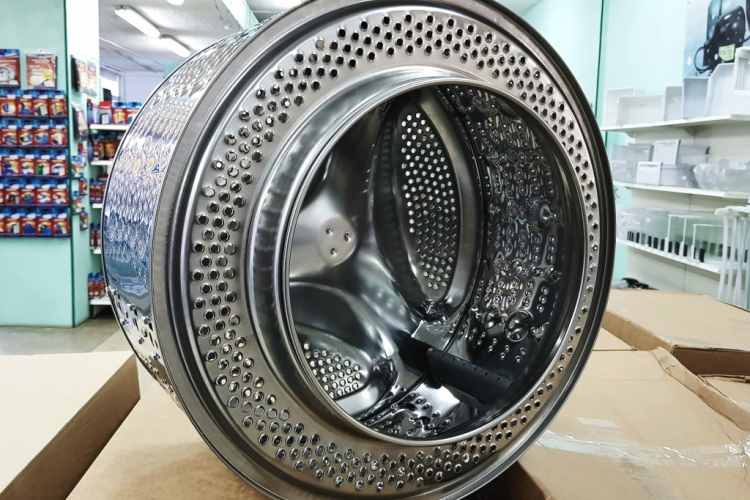
Shock absorbers and springs
The return spring returns the tank to its original position during strong swing. On one side, the spring is hooked to the body of the washing machine, on the other hand, it is attached to the top of the tank with a hook.
Shock absorbers, as well as springs, designed to dampen tank vibration during washing and spinning. On one side the shock absorbers are attached to the bottom of the tank, on the other - to the base of the washing machine body.
Vibration damping occurs due to the movement of the piston inside the cylinder. The gasket between the cylindrical shell and the piston is impregnated with lubricant. When the tank vibrates, the piston is smoothly pressed into the cylinder, dampening the vibration. Instructions for replacing shock absorbers on an LG washing machine with your own hands - here.

A heating element
A heating element or, as it is also called, a heating element, is a curved tube, the ends of which are connected to wiring. Inside the tube there is a thin heater and a dielectric (it is this that transfers heat to the metal walls of the heating element).
As soon as the water temperature reaches the required value, the temperature sensor is activated. It transmits a signal to the control module, which in turn blocks the supply of voltage to the heating element. Instructions for removing and replacing the heating element for an LG washing machine with your own hands - in this article.
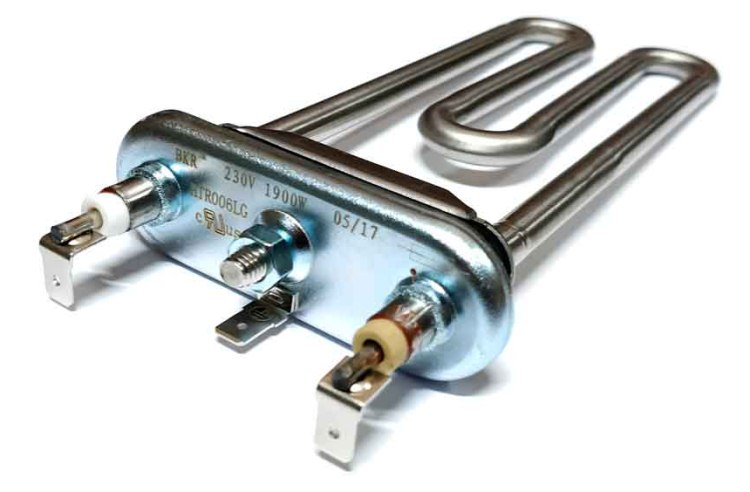
temperature sensor
Thermal sensor - an element that determines the temperature of the water in the drum. The thermistor is located inside the heating element. The sensitive element of the temperature sensor (metal cylinder), depending on the degree of heating of the water, changes the resistance indicator.
The process converts the sensor resistance readings into temperature parameters and transmits the resulting data to the control module. As soon as the degree of heating reaches a critical point, the module blocks the supply of voltage, thereby stopping the water heating process.
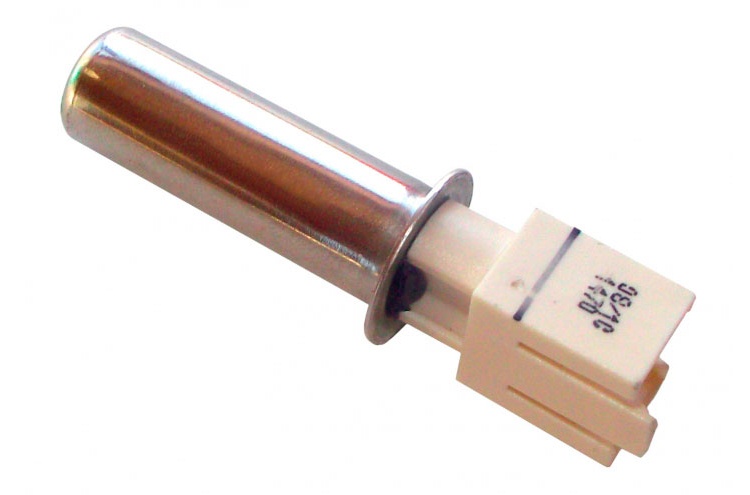
Drain pump
The main function of the drain pump is to pump and drain waste water from the washing machine drum. The pump consists of a motor, a rotating impeller and a volute (the element through which the pipes and drain hose are connected to the pump).
At the end of the washing process, the control module starts the drain pump. The waste water passes through the pipes through the pump impeller into the drain hose and then into the sewer. How to clean and change the drain hose for an LG washing machine, read Here.
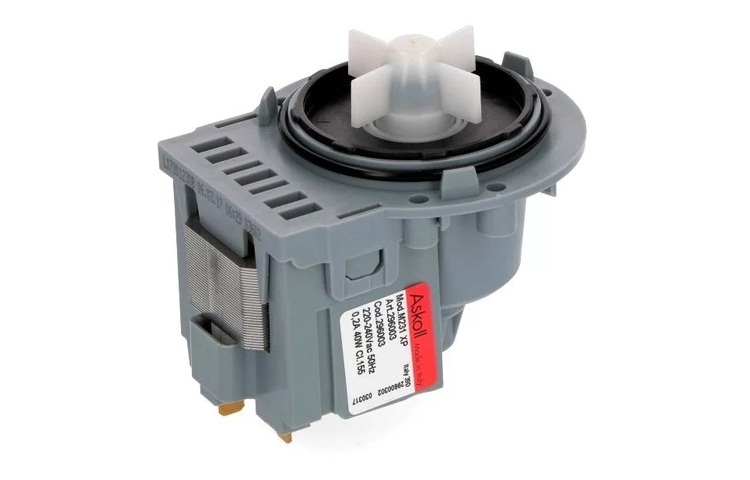
Conclusion
Understanding what each element of the internal structure of a washing machine looks like and on what principle it works will help you quickly restore the functionality of your household appliance with a minimum of time and effort.



I am very interested in the distance between the outside of the washing tub and the inside of the overall drum body. If possible, please tell me.